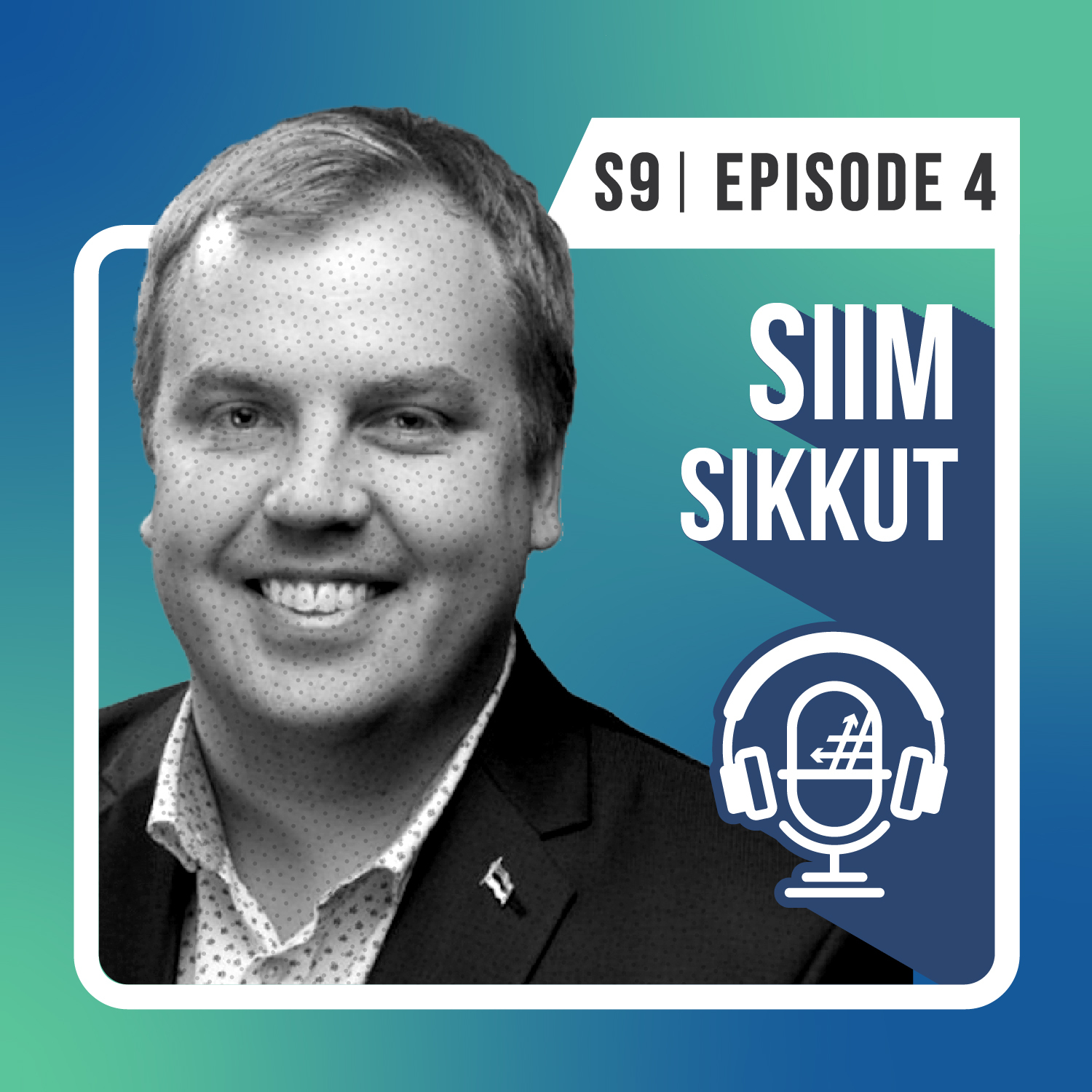S7 E3: Nurturing an All-Remote Workplace at Vital Farms

Vital Farms never planned for its employees to fly the coop. But as the Austin-based egg company adapted to the pandemic, its leaders and employees came to a shared conclusion: everyone could be happier and just as productive working from home permanently. Before leaving the nest, however, a lot of logistics had to be considered.
In this episode, I’ll get excellent advice from Odill Rodrigues, the Director of Digital Integration and Infrastructure, at Vital Farms. We’ll talk about making a plan, deploying the right collaboration tools, and keeping close-knit teammates engaged.
Come on, don’t be chicken. Join us for the chat.
In this episode:
Vital Farms
We were founded with the intention of bringing ethical food to the table. Our founder, Matt, found Vital Farms back in 2007 on a small plot of a land circle about 27 acres in Austin, Texas, which is where we’re headquartered. He started with 20 Rhode Island right-hand with an ambitious vision to produce humanely-raised food at scale.
Fast forward to today in 2021, we work with about 200 small family farms all across the United States. We’re the industry leader of pasture-raised eggs in the US and we are the second leading egg brand in the US by retail dollar values. Our pasture-raised products are sold in over 16,500 stores. We do everything from eggs, butter, to some fun products that we just launched a few weeks ago.
We have maintained a commitment to conscious capitalism since our founding, which means that we prioritize the long-term sustainability of our stakeholders—farmers, suppliers, crew members, customers, consumers, community, and the environment. For us, stockholders aren’t the necessary focus of a hundred percent of our decisions. It has to be acceptable and approachable with better outcomes for each of our stakeholders. And in fact, last year, we donated about 14 million eggs across our community. So, we try to give back to the local communities where we belong.
Going all-remote
From an organizational perspective, going all remote was a very methodical decision. We wanted to collaborate with a tool. We made sure that the decision that we took, whether to be physically at the office or remote, was going to be the right one that has sounded across the board.
When we connected our reviews with crew members, over 90% of our crew members said, “We want to work from home. We love this newfound flexibility.” Because of that, the decision to go remote was received positively across the board because it was a decision that wasn’t top-down.
Throughout last year, since COVID struck, we’ve had a constant pulse with our crew members to understand how they’re feeling. We want them to be safe and supported in this new working environment. We achieved it through surveys, one-on-ones, leaders checking in quarterly. Empathy is one of our core values, so this metamorphosis from a physical to a virtual workspace is a great example for us in how we’re putting our crew members first right now. A lot of our crew members had unexpected childcare loss, so this flexibility now allows them to work from home and care for their loved ones and their family.
We all managed this dynamic shift in our personal and professional lives without skipping a beat. And that to me is very incredible. And from an IT perspective, we had the infrastructure in place to sort of prepare for these events. So we were in a really good place that set us up for adoption. And interestingly, Microsoft 365 was on our 2020 roadmap before COVID became headlines for us. So it was just a very nice switch over to adoption and adoption of the tools.
Revamping the Vital HQ
In terms of culture, we have a very special cutter by the farms. We miss being in the office, we miss all our high fives or hugs. We’re very collaborative people, so some of the things that we’re trying to do is, we are going to re-conceptualize our Austin headquarter office. It’s going to become a collaboration space from an IQ perspective. You’ve got a couple of hot desks, so people coming in can drop in, or some local teams want to go in and meet and have a jam session, they can go ahead and do their working sessions there. But for the most part, it’s going to be collaboration.
We’ve also led to hosting our monthly town halls that we have for the local folks that can make it in the Austin headquarters. So, we are all connected through the Teams environment in one big global digital workspace. We have a cross-functional committee that is actually working on redesigning the office workspace to make sure that the future state of Vital headquarters looks and is embracing of everybody in every department.
Bringing in Microsoft 365
Before Microsoft 365, we used Outlook and all of the Excel and PowerPoint—the basic tools. Skype was our collaboration or communication tool. And we did realize that with Office 365, it’s bringing in so much collaboration and seamlessness across the platform, so we had this fantastic roadmap set up of things that we wanted to do. And as I said, you can only comprehend the immense value add going from Skype to Microsoft Teams.
It was just incredible to be able to collaborate, chat, have video meetings, audio calls, and work on one live version of a document and not have conflicted copies of it and just deliver a world-class product. I think that was the prime focus for us to go ahead and do that.
User adoption experience
As we’re bringing new crew members in the fold, we had some challenges with our people who have never worked with Teams or just with Microsoft in general. We have a lot of folks that maybe have a GSuite experience, or they’ve used anything, but not Microsoft 365.
So, with every single solution we’ve rolled out with Office 365, we do pre-go and post-go-live training sessions. We do continuous learning once a quarter and we are just learning new technologies and tricks.
We also hosted a bunch of lunch and learns and we had 30-32 people in each session and it wasn’t terrible. And the value add to the organization is phenomenal. We’re all juggling 200 things at the same time, and to be able to put order to that chaos by all the tools already available at our disposal, you can’t put a price to that, you know? It’s fantastic.
I think, for us at Vital Farms, we have an incredibly resilient and adaptable crew. They have embraced it. And I don’t know if it was expedited because of us being remote since mid-March last year, but they have embraced all the new technologies we’ve rolled out–Teams, PowerBI, Planner, Power Automate, and Flow. And we’re using all of these things right in our day-to-day working today.
Microsoft Teams
I think you cannot understand the amount of collaboration that is possible in Office 365. The way I look at it is almost like a beehive model. You just stack every module on top of each other and you can actually spend your entire workday in Teams and open everything from Teams. I would have my PowerBI reports tagged on my Teams. I have MyHub on my Teams. I have like Planner on my Teams. I do not go outside of Teams except for Outlook, of course, and those SaaS applications we use in our day-to-day. But Teams is my ecosystem within the Office 365 ecosystem. So you’re missing out, man, if you’re not on it.
Launching an intranet
SharePoint, I think, is the next organic evolution in the 365 collaboration suite for us. We’ve long wanted to have an intranet that’s employee-focused, crew member-focused. The way we were anticipating it is for it to be the one-stop-shop for all our crew members who go in for feeds.
We’re setting it up sort of like a hub-spoke. So, you’ve got the main company website, and then you’ve got departmental subsites, and then they’re going to choose and pick what items get flashed across the organization and things like that.
We are also growing at an incredible pace since going public last year, so that to us means that we also now need to highlight and showcase and also give our crews a one-stop-shop to access a bunch of tools and sources. Rather than remember where you bookmark what, just go to the Vital HubSpot, and you’re going to be able to find what you’re looking for. And we’ve got a pilot in the pipeline right now, we’re testing with a couple of teams.
How to make #ShiftHappen
I would say don’t make a top-down decision. We did a pretty good job with it. We listened and we co-created the future concept of what our office needs to be. As I said, again, the stakeholder model is pretty ingrained and hardwired into the Vital Farms DNA. So, we’re always going to do what’s right for every single stakeholder. And I would close by saying that every opinion matters. If you take care of the people, the rest will fall into place.
Today’s takeaway from Odill:
“When you’re interacting and collaborating a lot more in this virtual workspace than you may have initially anticipated, make that a powerful motivator to land new things and launch more things.”
Learn more, visit the Vital Farms website: vitalfarms.com
Subscribe where you get your podcasts! Search for “#ShiftHappens” in your favorite podcast app.
With over 20 years of business and technology experience, Dux has driven organizational transformations worldwide with his ability to simplify complex ideas and deliver relevant solutions. He serves as the Chief Brand Officer of AvePoint who has authored the LinkedIn Learning course How to Build Your Personal Brand, the book SharePoint for Project Management, as well as numerous whitepapers and articles. As a public speaker, Dux has delivered engaging, interactive presentations to more than 25,000 people at leading industry events around the world. He also hosts the modern workplace podcast #shifthappens that focuses on how leading organizations navigated their business transformation journey. Dux advocates tirelessly for inclusion, using technology for good, and philanthropic initiatives. Connect with him: http://dux.sy



